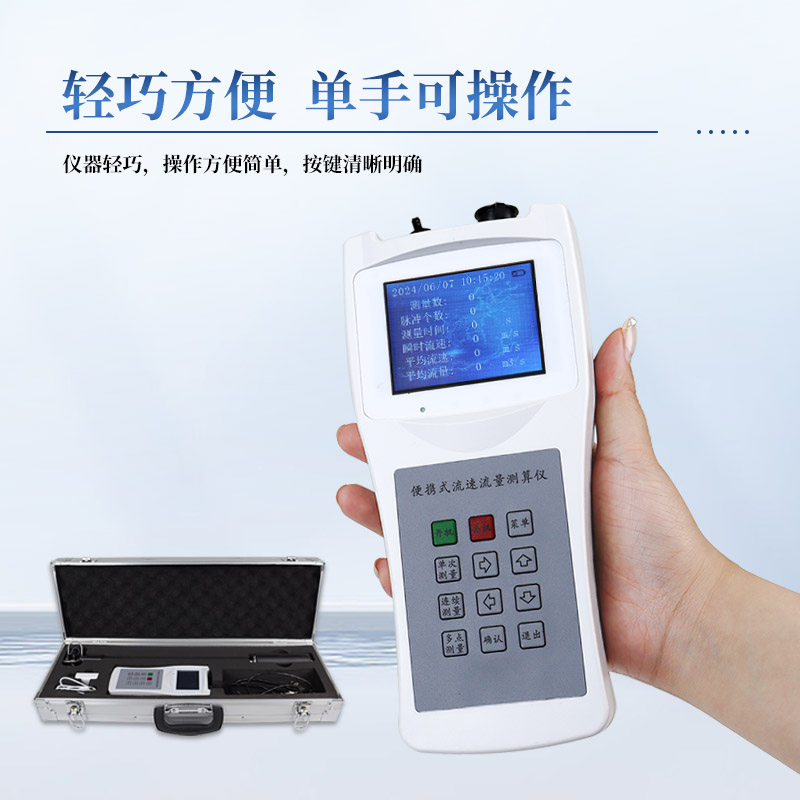Tianyi Sensor IOT Technology Co., Ltd
Sales Manager:Ms. Emily Wang
Cel,Whatsapp,Wechat:+86 15898932201
Email:info@fengtutec.com
Add:No. 155 Optoelectronic Industry Accelerator, Gaoxin District, Weifang, Shandong, China

Sales Manager:Ms. Emily Wang
Cel,Whatsapp,Wechat:+86 15898932201
Email:info@fengtutec.com
Add:No. 155 Optoelectronic Industry Accelerator, Gaoxin District, Weifang, Shandong, China
time:2025-06-04 08:56:15 source:Weather Station viewed:188 time
Why measure the flow velocity of a river?
First, it provides data support for water resources management. By mastering the river flow velocity, water resources can be rationally allocated to ensure the water demand for daily life and production.
Second, it helps with flood control and disaster reduction. Accurate flow velocity data can assist in predicting the evolution of floods and formulating response measures in advance.
Third, it serves water environment protection. Understanding the flow velocity is helpful for analyzing the diffusion of pollutants, thereby adopting effective treatment measures.
Fourth, it provides a basis for the construction and operation management of water conservancy projects, such as reservoir dispatching and river regulation.
There are various methods for measuring river flow velocity, and common ones include the float method, current meter method, and hydraulic formula method. The float method determines the flow velocity by measuring the drifting speed of a float with the water flow. The current meter method uses a special current meter for measurement. The hydraulic formula method calculates the flow velocity through formulas based on hydraulic principles and data such as river water level and cross - sectional shape.
At present, there are many types of instruments applied to river flow velocity measurement. The following are three common instruments.
The Doppler current meter FT - LS6 + adopts ultrasonic detection technology and measures the flow velocity based on the principle of the Doppler effect. It stands out due to its high precision, strong stability, and little influence from environmental factors. The instrument has no rotating parts, low maintenance frequency, and high work reliability. It can measure the flow, flow velocity, and water level of pipelines, channels, and natural rivers. It has a wide flow velocity measurement range, and can accurately measure the bidirectional flow velocity of 0 - 10m/s. The flow velocity measurement accuracy reaches an error of 1mm/s. The sensor protection level is IP68, supporting long - term underwater work.
The LJ20A propeller current meter is mainly composed of a propeller flow velocity sensor, a flow velocity calculator, and a measuring rod. It is designed according to the principle of the velocity - area method for open channel flow measurement. During flow measurement, the hydraulic force pushes the propeller rotor current meter to rotate, and the built - in signal device generates rotation number signals, thereby calculating the flow velocity. It has a simple structure, is light and convenient, has low power consumption, complete functions, high automation degree, and is stable and reliable. It complies with the national open channel flow measurement standard. The flow velocity measurement range is 0.03 - 10m/s, and the starting rotation speed is low, which can adapt to the measurement needs of rivers with different flow velocities. It is widely used in hydrological surveys, water conservancy investigations, farmland irrigation and other departments.
The Radar Flow Meter FT - SW3 is based on radar technology and the Doppler effect, and calculates the water flow velocity by transmitting and receiving electromagnetic waves and measuring the Doppler frequency shift. It uses high - frequency continuous - wave radar and has the advantages of non - contact measurement, convenient installation, and strong adaptability. It can realize all - weather unattended continuous measurement, and can timely reflect the real - time changes of river flow velocity, providing efficient data support for flood control and drought relief, hydrological monitoring and other aspects.
In summary, the three Water Flow Monitors have their own advantages. The Doppler current meter has high precision and complete functions; the propeller current meter is economical, practical, and easy to operate; the Radar Flow Meter is suitable for harsh environments and convenient to install. In practical applications, the river characteristics, monitoring needs, budget and other factors can be considered to reasonably select or combine the use of these instruments to ensure the accuracy and reliability of river flow velocity monitoring.

The core of the Odor Online Monitor lies in simulating human olfactory perception, enabling simultaneous monitoring of multiple malodorous pollutants. It is particularly suitable for 24/7 continuous monitoring in environments such as landfill sites, chemical industrial parks, and wastewater treatmen...
Dust Monitoring Equipment is a critical environmental monitoring device explicitly required by environmental protection authorities. Its core monitoring parameters include PM2.5 and PM10, while it also concurrently monitors meteorological factors such as wind speed, wind direction, temperature, and...
Meteorological monitoring system is a high-precision automatic meteorological observation device integrating temperature, humidity, wind speed, wind direction, and atmospheric pressure sensors. This device combines ultrasonic detection technology to achieve accurate all-weather monitoring of meteorological elements....
Global Navigation Satellite System (GNSS) is an autonomous, worldwide space-based positioning system. These systems continuously broadcast radio navigation signals to the ground through satellite constellations, providing users with positioning, navigation, and timing services.01 GNSS Technica...